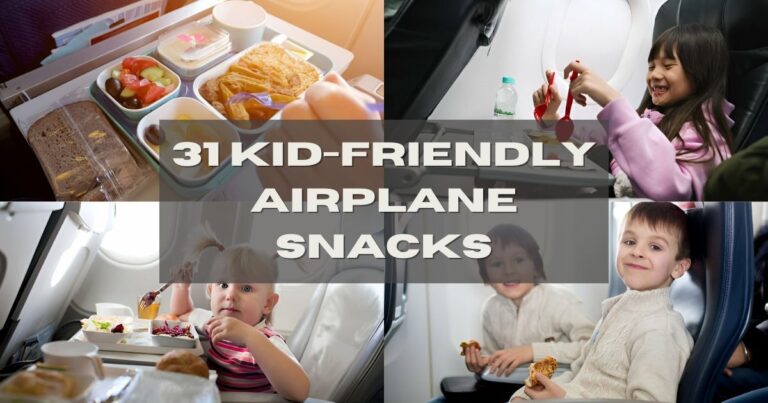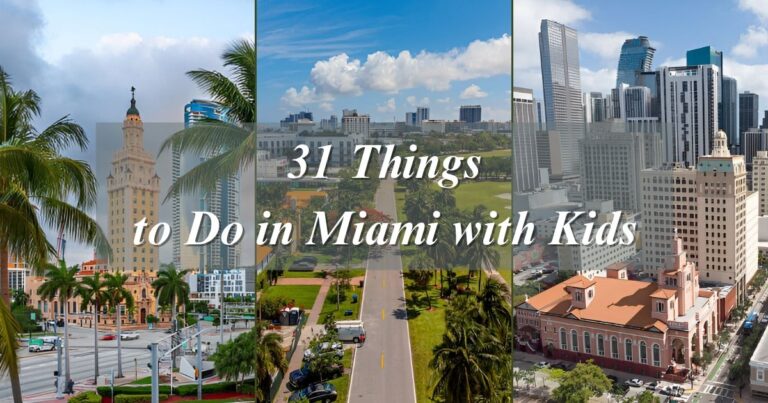The Ultimate Plane Packing List for Traveling with a Toddler and Baby
Traveling with a toddler or baby is a rewarding yet challenging experience that requires meticulous planning and preparation. From ensuring the comfort of your little one to managing airline policies and logistics, having a comprehensive packing list can make all the difference between a stressful trip and a memorable journey. This guide delves into the essentials, packing categories, and safety measures to help parents travel confidently with their young children.
1. Essentials for Traveling with a Toddler and Baby
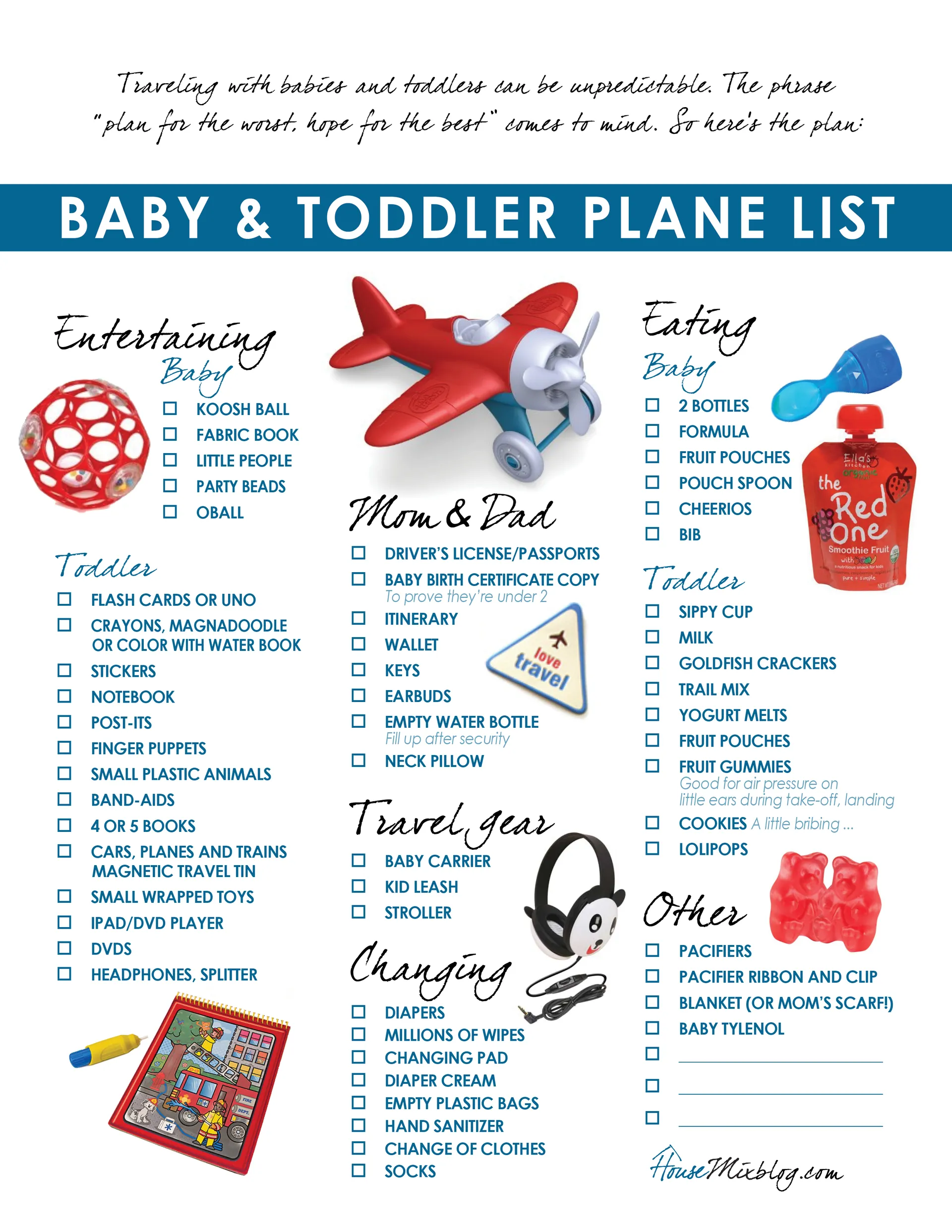
1.1 Why Preparation is Key
Preparation is the cornerstone of a stress-free travel experience with toddlers and babies. Unlike traveling solo or with adults, flying with young children involves anticipating specific needs that cater to their unique requirements. For instance, infants may require frequent diaper changes, while toddlers need consistent entertainment and snacks to stay occupied during a long flight. Additionally, disruptions like delays or turbulence can easily unsettle children, making advance planning all the more critical.
Several factors must be considered during preparation:
- Flight Duration and Timing: For long-haul flights, pack extra diapers, food, and comfort items to keep your little one relaxed. If possible, schedule flights during nap times to increase the chances of your child sleeping onboard.
- Destination Weather: Knowing the climate at your destination helps ensure you pack suitable clothing, whether it’s lightweight outfits for tropical weather or layers for colder regions.
- Airline Policies: Different airlines have varying regulations regarding baby gear (e.g., bassinets, car seats, and strollers). Familiarize yourself with the airline’s policies in advance to avoid surprises at the airport.
Being prepared not only helps smooth out potential hiccups but also allows you to focus on creating enjoyable memories with your family.
1.2 Key Considerations Before Packing
Before diving into the packing process, there are several logistical and practical aspects to address:
Airline Policies
Most airlines permit passengers to bring additional items like a diaper bag or baby equipment free of charge. For international flights, inquire about bassinet availability for infants (usually for babies under one year old) or consider bringing an FAA-approved car seat for added safety. Strollers can often be gate-checked, making them accessible at your destination.
Travel Documents
Whether domestically or internationally, ensure you have the proper documentation. Babies and toddlers require passports for international travel, and some airlines may request a birth certificate for domestic trips. Double-check entry requirements for your destination, including any visa or vaccination mandates.
Health Precautions
Health is a top priority when traveling with little ones. Pack any prescription medications your child might need, along with a basic first aid kit that includes items like antiseptic wipes and baby-safe pain relievers. A thermometer is essential for monitoring fevers, and don’t forget to bring proof of vaccinations if applicable.
2. Packing Categories
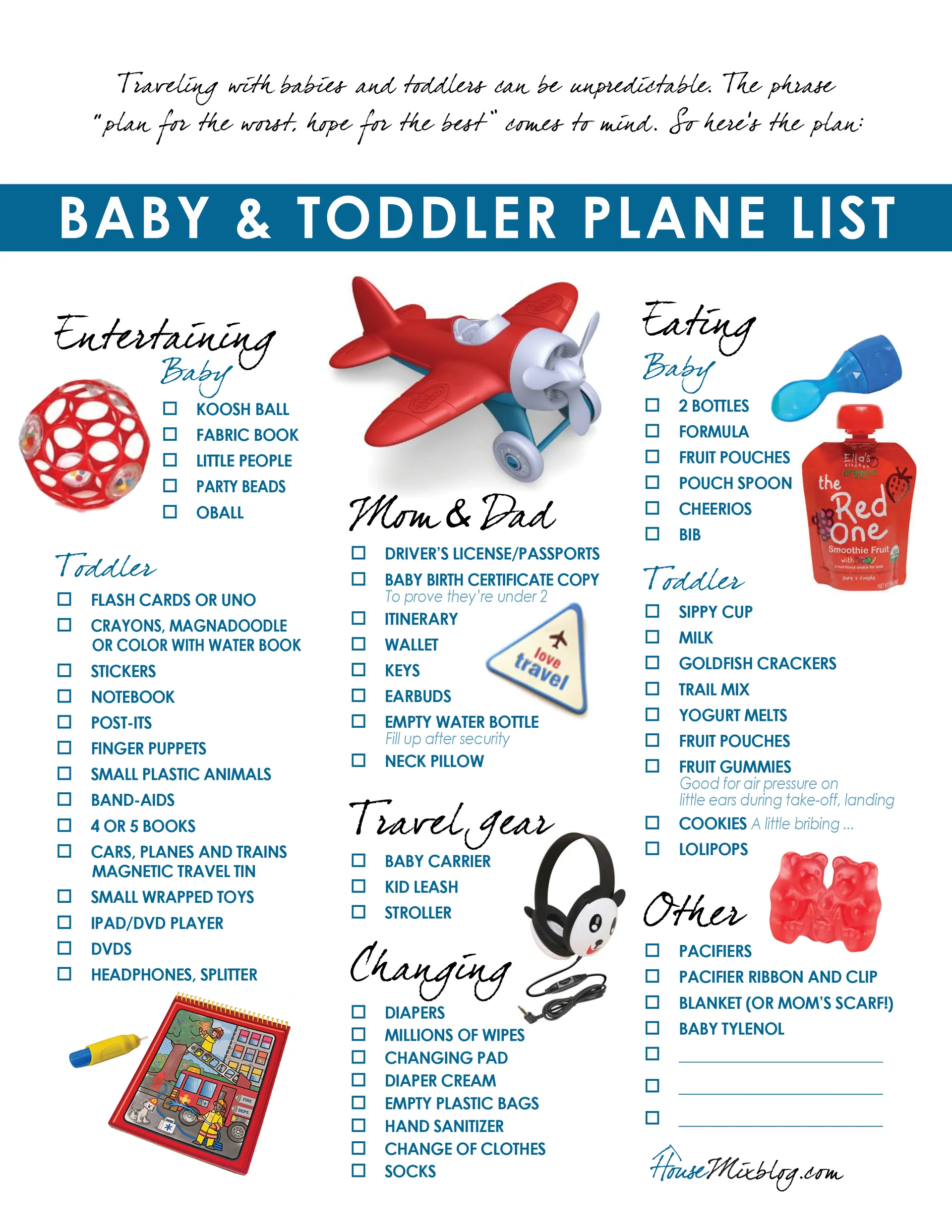
Organizing your packing process into distinct categories can simplify your travel preparations. Below is a detailed breakdown of the key essentials for diapering, feeding, clothing, and entertainment.
2.1 Diapering Essentials
Managing diaper changes during a flight can feel daunting, but with the right supplies, it becomes manageable. Ensuring a clean, comfortable experience for your baby starts with these absolute must-haves:
- Diapers: Experts recommend packing one diaper per hour of travel, along with a few extras for unexpected delays. For instance, on a 6-hour flight, you should pack at least 8-10 diapers.
- Wipes: A versatile item, wipes are not just for diaper changes but also useful for cleaning hands, faces, or airplane tray tables.
- Portable Changing Pad: Compact and foldable changing pads are ideal for fitting into cramped airplane bathrooms.
- Disposable Bags: These are perfect for containing soiled diapers or clothing until you can properly dispose of them.
Additional tips include using diaper-specific packing cubes or pouches to keep everything organized and easy to access.
2.2 Feeding Essentials
Whether your baby relies on formula or you have a snack-hungry toddler, preparation in the feeding department is critical. Airline food options may not always be baby-appropriate, so plan ahead with what your child will need:
- Formula or Breast Milk: Fortunately, TSA allows you to bring quantities exceeding the typical 3.4-ounce liquid limit for baby formula, expressed milk, or baby food. Just declare these items at the security checkpoint.
- Snacks: For older babies and toddlers, pack age-appropriate snacks that are low-mess and easy to eat. Popular options include puffs, crackers, fruit pouches, and granola bars.
- Bottles and Sippy Cups: Opt for non-spill designs to minimize cleanup during turbulence. Bring at least two bottles and one sippy cup to alternate as needed.
- Bibs and Utensils: Silicone bibs are lightweight, easy to clean, and foldable, making them perfect for travel. Don’t forget child-friendly utensils like travel spoons.
Pro Tip: Pack enough snacks to cover potential flight delays and periods between meals.
2.3 Clothing and Comfort Items
Keeping your little one comfortable throughout the journey is essential. From diaper blowouts to spilled milk, having extra clothing will save you from sticky situations:
- Extra Outfits: Always pack at least two complete spare outfits per child. Choose comfortable, breathable fabrics to keep your baby calm in fluctuating airplane temperatures.
- Sleepwear: Lightweight sleep sacks or footed pajamas can help signal to your baby that it’s time to rest, even in an unfamiliar environment.
- Blankets: Multi-purpose muslin blankets are invaluable—they can be used for swaddling, as nursing covers, or simply as a comfort item.
Consider packing these items in a zippered bag within your carry-on for quick access during the flight.
2.4 Entertainment and Toys
Keeping a toddler entertained on a plane is one of the most challenging aspects of traveling with small children. Preparing a well-thought-out arsenal of toys and activities can prevent restlessness and meltdowns:
- Quiet Toys: Opt for compact, noise-free toys like reusable sticker books, sensory toys (e.g., Water Wow! boards), or magnetic puzzles.
- Interactive Items: Buckle toys, finger puppets, or busy boards are particularly engaging for toddlers as they provide hands-on activity.
- Tablets or E-Readers: While screen-free activities are ideal, it’s always good to have a tablet preloaded with child-friendly apps, videos, or games. Don’t forget kid-sized noise-canceling headphones to minimize disruptions to fellow passengers.
Rotate toys during the flight to keep their attention fresh.
3. Safety and Health Essentials
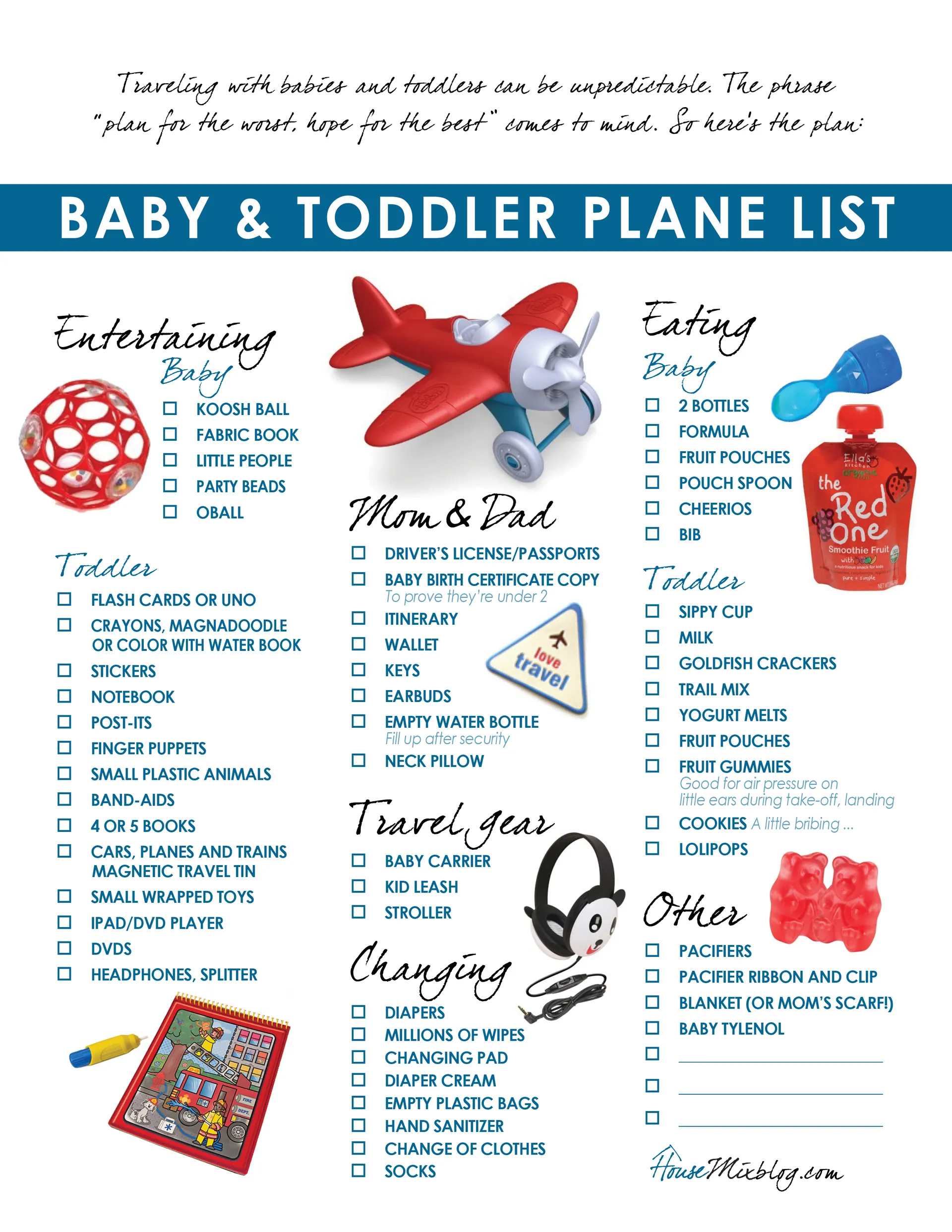
3.1 First Aid Kit
A well-stocked first aid kit tailored to your child’s needs is a must-have for any trip. This kit should include:
- Baby-safe pain relievers (e.g., infant ibuprofen or acetaminophen).
- Teething gel or tablets for younger infants.
- Antiseptic wipes for cleaning minor cuts or scrapes.
- Band-aids and gauze for emergencies.
- A thermometer for checking fevers.
Keeping these items in a resealable bag makes them easy to locate in your carry-on.
3.2 Travel-Specific Safety Gear
Flying with little ones requires appropriate safety gear to ensure their well-being during the journey:
- FAA-Approved Car Seats or CARES Harness: These provide extra safety during turbulence and keep wiggly toddlers restrained. Be sure to verify that your car seat meets airline safety guidelines.
- Baby Noise-Canceling Headphones: Protect your baby’s sensitive ears from cabin noise while offering them a calming environment to nap.
4. Tips for Efficient Packing
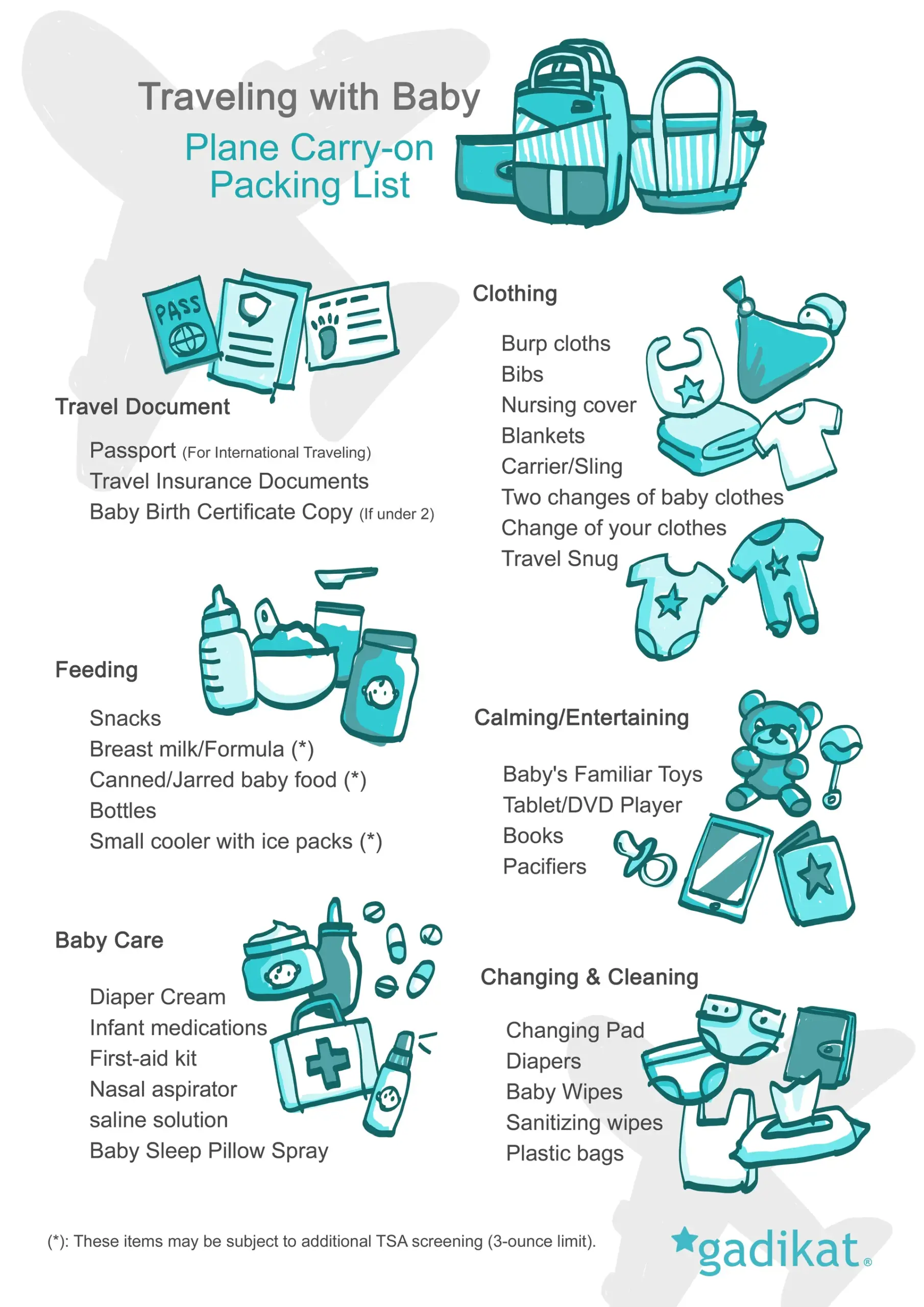
Traveling with toddlers and babies can be overwhelming, but efficient packing strategies can make your journey smoother. The key lies in organized, intentional packing to minimize bulk and maximize accessibility.
4.1 Organizing Your Carry-On Bag
The carry-on bag is your lifeline during the flight, so its organization is paramount. Investing in packing cubes or zippered pouches can help separate essentials into easily retrievable sections. Consider categorizing items this way:
- Diapering Kit: Include diapers, wipes, a portable changing pad, and disposable bags in one pouch.
- Feeding Essentials: Carry formula, snacks, bottles, bibs, and utensils together for quick access.
- Entertainment & Toys: Keep quiet toys, sensory activities, and tablets in a dedicated section to grab quickly when meltdowns ensue.
- Clothing and Blankets: Fold extra outfits and blankets neatly in a separate packing cube in case of spills or accidents.
Additionally, keep important documents like travel IDs, boarding passes, and health records in an easily accessible compartment.
4.2 Minimizing Bulk
Traveling light while accommodating your child’s needs is a balancing act. Here are some strategies to reduce bulk:
- Choose Lightweight Equipment: Compact strollers like the Babyzen Yoyo or an umbrella stroller fit in overhead bins and are easy to transport through the airport.
- Dual-Purpose Items: Opt for multi-use items, such as swaddle blankets that also serve as nursing covers or stroller shades.
- Pack Refillable Containers: Instead of carrying full-sized toiletries, transfer liquids like baby lotion or sanitizer into travel-sized bottles.
- Prioritize Essentials: It’s tempting to overpack “just in case,” but focus on what your child truly needs during transit. For example, pack only enough diapers and formula for the flight, and buy additional supplies at your destination.
5. Additional Tips for Stress-Free Travel
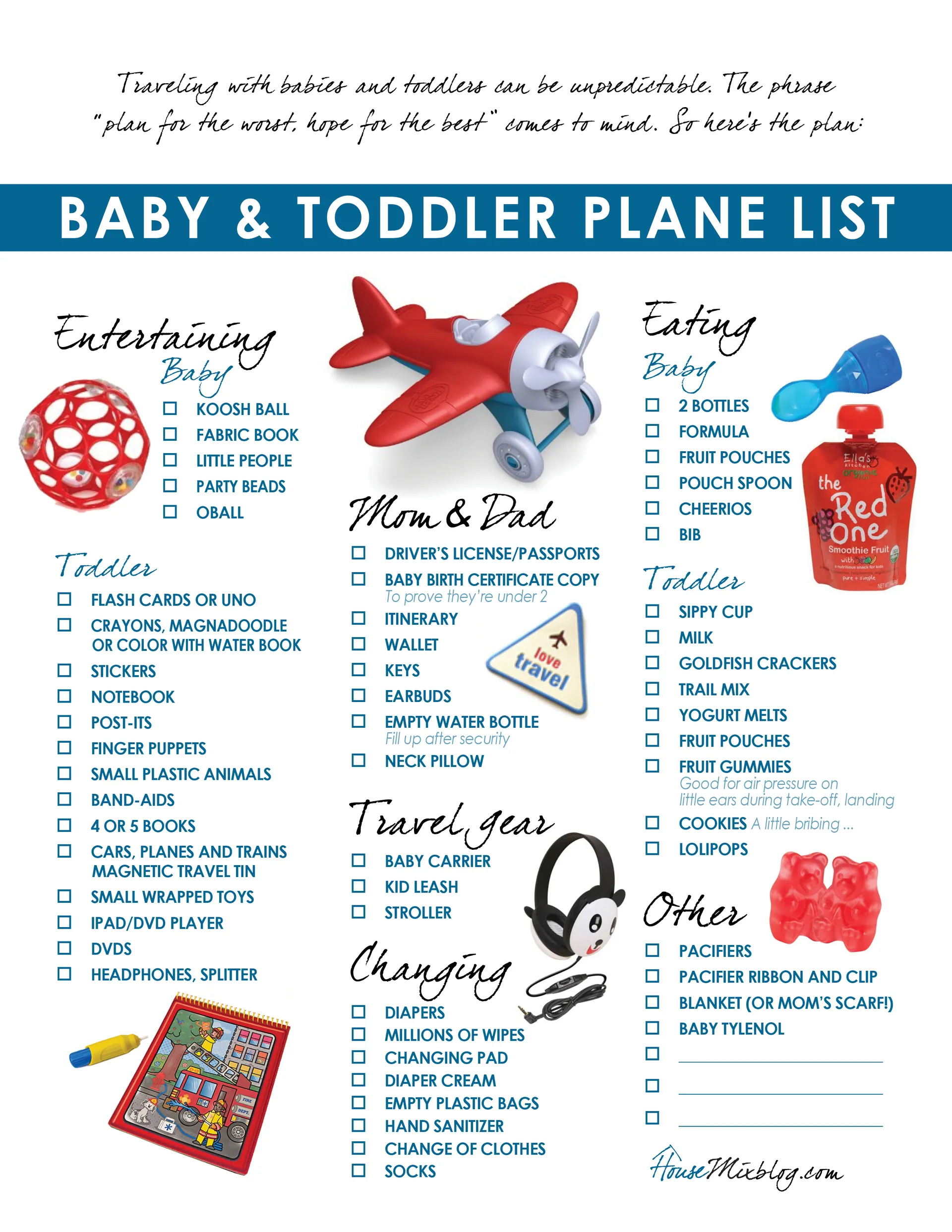
Flying with a toddler or baby doesn’t have to be stressful. Armed with the right knowledge and proactive planning, you can make the experience enjoyable for the whole family.
5.1 Managing In-Flight Challenges
Being prepared for common in-flight challenges can help you stay calm when situations arise. Here are some tips to handle the most frequent obstacles:
- Preventing Ear Pain: Changes in cabin pressure during takeoff and landing can cause discomfort for babies and toddlers. Use a pacifier, bottle, or breastfeed to help equalize the pressure. For toddlers, sucking on a lollipop or drinking from a straw can also work.
- Handling Meltdowns: If your child experiences a meltdown mid-flight, stay calm and patient. Distract them with a favorite toy, snack, or soothing song. Walk around the cabin (if allowed) to help them release pent-up energy.
- Encouraging Sleep: Dim overhead lights and use a lightweight blanket to create a cozy sleep environment. Familiar sleep aids, like a favorite stuffed animal or portable white noise machine, can help lull your child to sleep.
5.2 Navigating Airports with Kids
Airports can be chaotic, especially when traveling with young children. Here are some ways to simplify the experience:
- Use a Baby Carrier: For infants and younger toddlers, baby carriers are a lifesaver. They keep your hands free for navigating security checks, and your baby feels secure being held close to you.
- Gate-Check Strollers: Most airlines allow you to gate-check strollers, making them available immediately upon landing. This is especially useful if you have a long walk between gates.
- Plan for Security Checks: Remove liquids, snacks, and baby items like formula or milk from your bag for faster screening. Inform TSA agents if you’re carrying items like breast milk that exceed typical liquid limits.
- Arrive Early: With children in tow, the check-in and boarding process takes longer. Arriving early buys you time to address unexpected delays or emergencies.
FAQs: Plane Pack List for Toddler and Baby
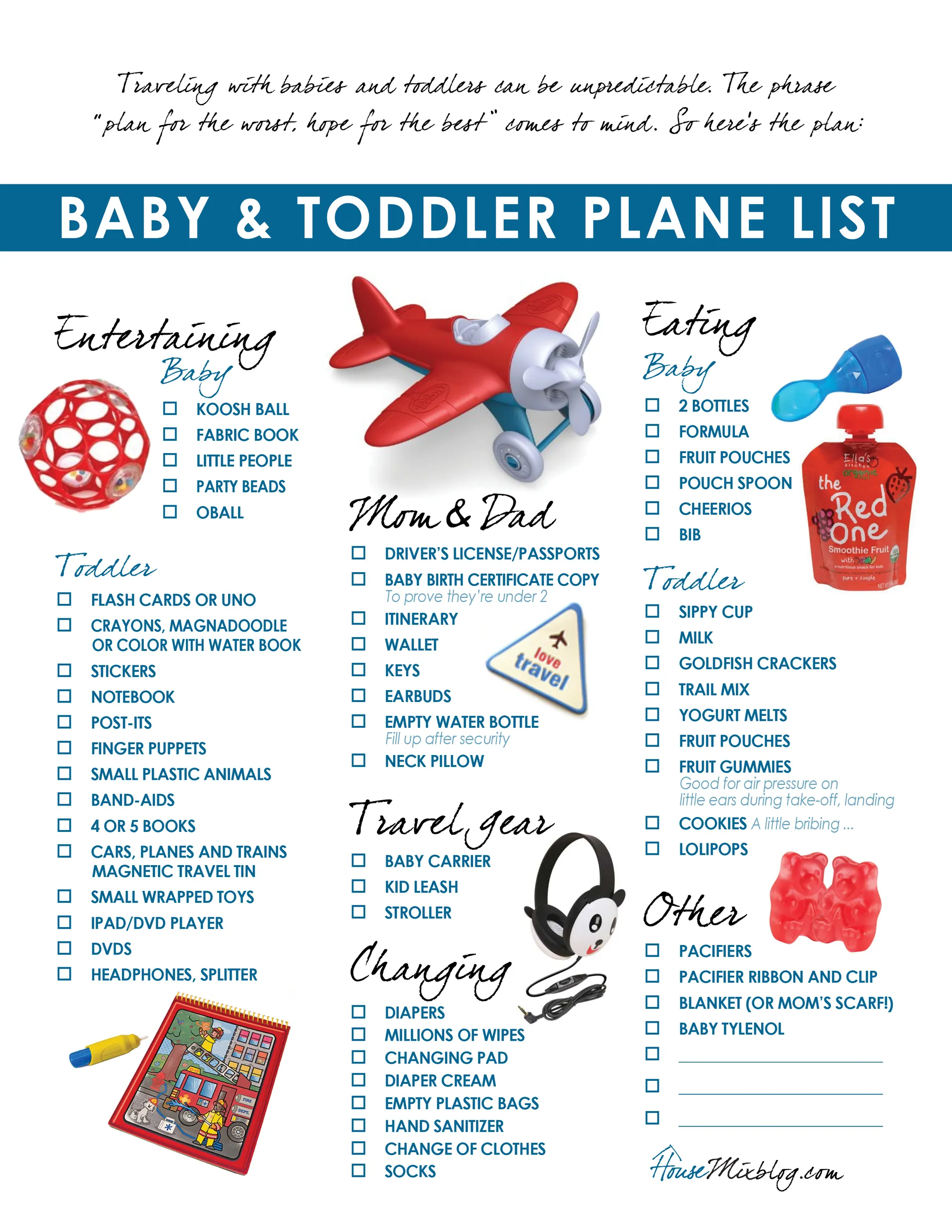
Parents often have questions when preparing for air travel with little ones. Below are answers to some of the most frequently asked questions:
1. How many diapers should I pack for a flight?
Pack one diaper for every hour of travel, plus a few extras for delays. For example, on a 6-hour flight, bring 8 to 10 diapers to ensure you’re covered.
2. Can I bring formula and breast milk through airport security?
Yes, you can bring formula, breast milk, and juice for infants in quantities exceeding 3.4 ounces. Declare these items at the security checkpoint for proper screening.
3. What snacks are ideal for toddlers on a plane?
Choose non-messy and easy-to-eat snacks like puffs, veggie straws, crackers, granola bars, and fruit pouches. These are convenient to pack and minimize crumbs or sticky hands.
4. Do I need a car seat on the plane?
While not mandatory, FAA-approved car seats provide additional safety during turbulence. They are highly recommended, especially for long-haul flights or younger toddlers who may nap during the trip.
5. What’s the best way to keep my toddler entertained during a flight?
Quiet toys, sticker books, magnetic puzzles, and preloaded tablets work well to keep toddlers engaged. Bring a variety of activities and introduce them gradually to sustain interest.
6. How can I minimize bulk when flying with a baby and toddler?
Opt for dual-purpose items, lightweight strollers, and refillable containers. Pack only what you’ll need during the flight and purchase extras like diapers or formula at your destination.
Conclusion
Traveling with a toddler and baby may seem daunting at first, but the right preparation and packing strategies can turn potential chaos into a manageable and even enjoyable experience. By planning ahead, organizing essentials into categories, and understanding the nuances of both your child’s needs and airline regulations, you can ensure a smoother journey for everyone involved.


